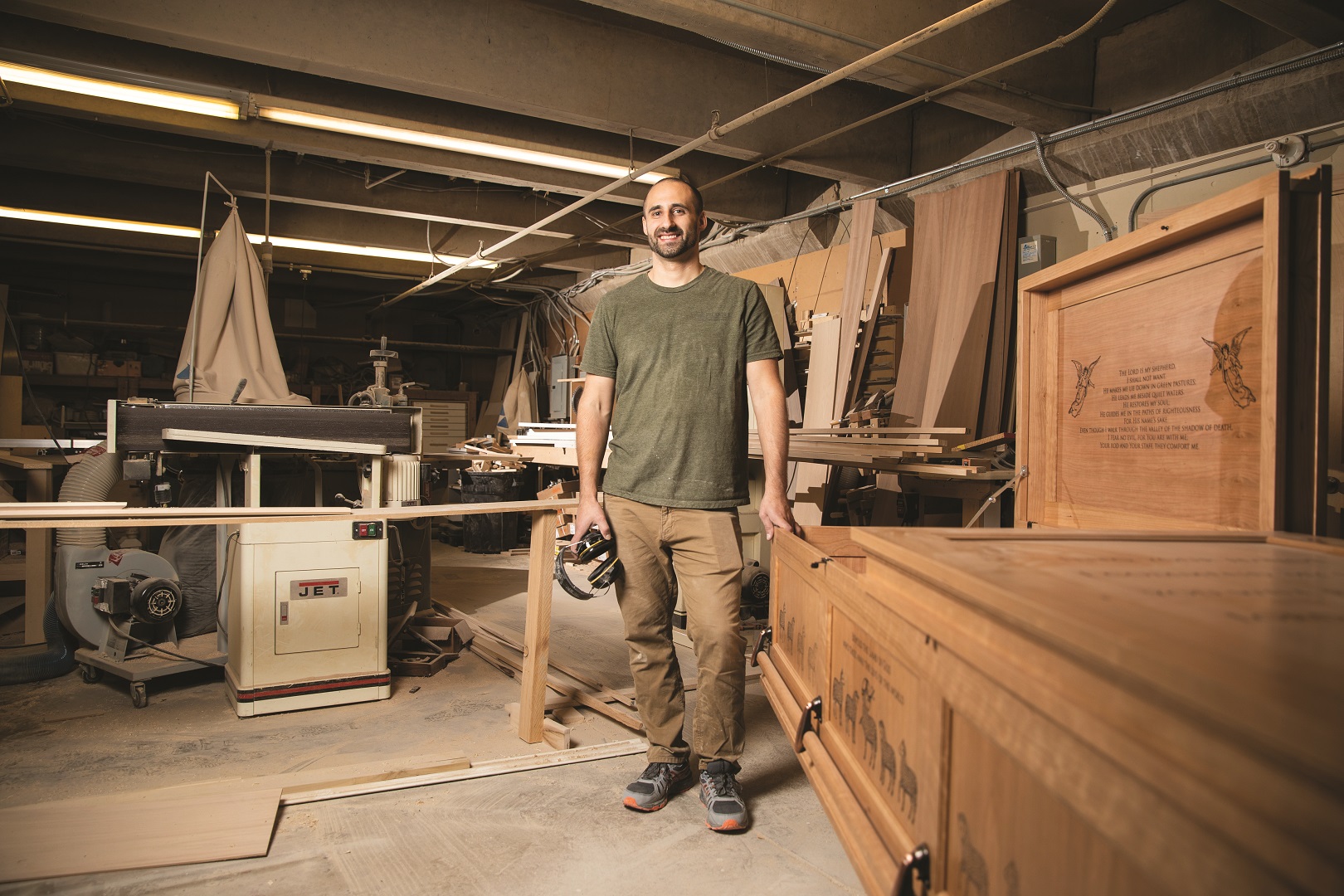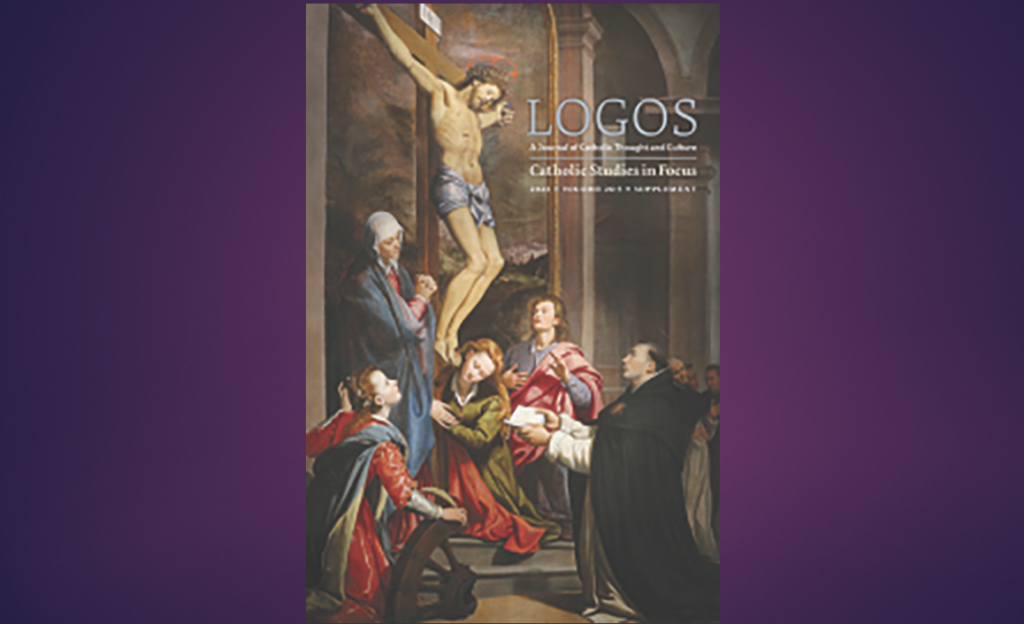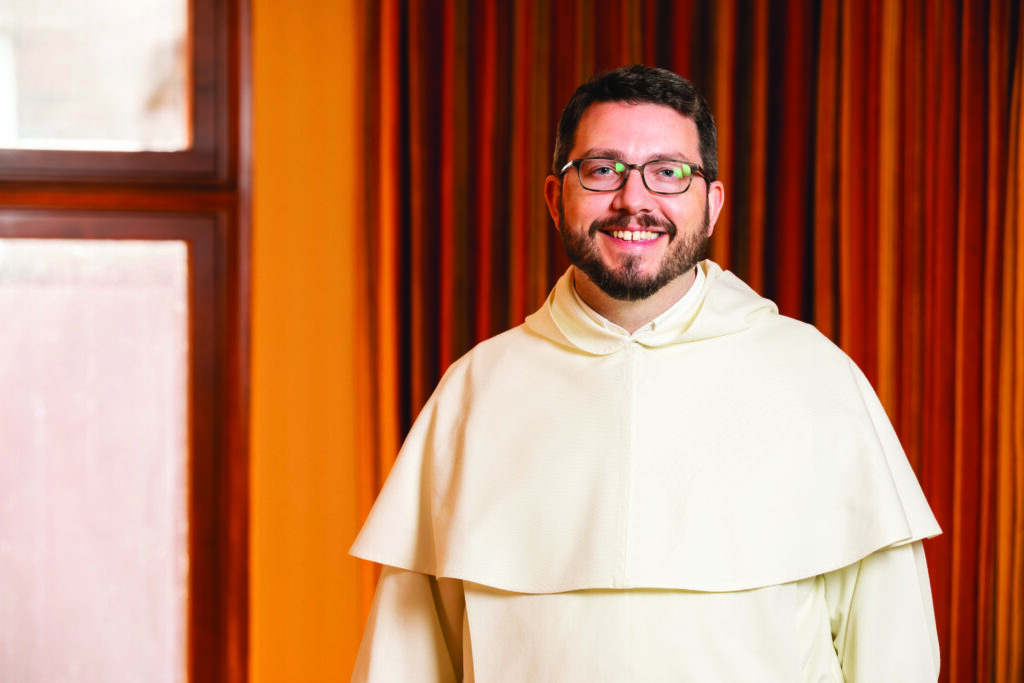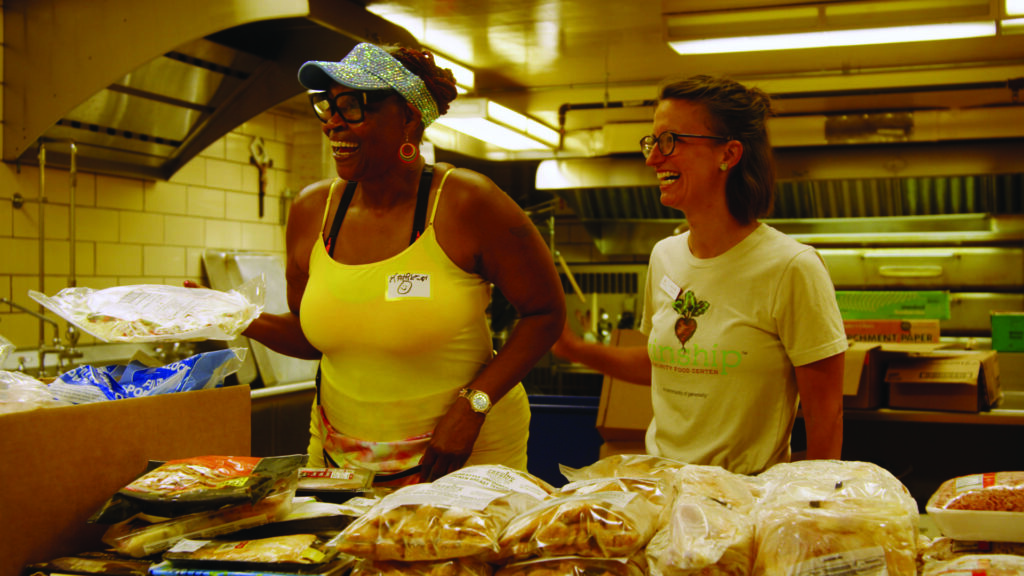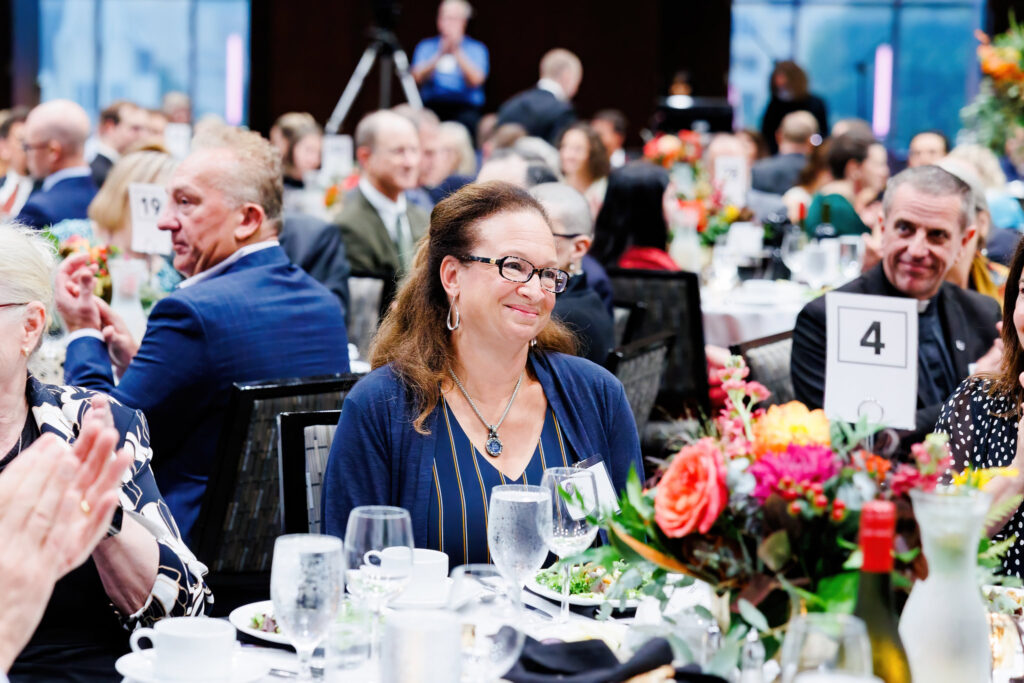Every woodworker has their favorite species. For Dan Purkapile ’12, it’s a toss-up depending on the project, but walnut and cherry are pretty high in the ranking.
“When it comes to walnut or cherry, I never want to stain those woods,” he said, “If you’re going to stain something, use maple! Walnut is so beautiful, why would you stain it?”
Walking around his workshop in New Brighton, Minnesota, the philosophy major and Catholic studies minor, now full-time cabinetmaker, is happy to point out the characteristics of the wood pieces that lean against the walls, almost as if they were old friends. He selects a rough slab of red oak and holds it lovingly.
“You see all the flecking in that wood, all the character?” he said, brushing his hands over it with admiration and care. He’s a bit like a child in a candy shop, delighting in each piece for its own unique contribution to the world of beauty and for what it will become – cabinet, vanity, church altar or pew.
“I love the products that you can make out of wood,” he said, “and there’s nothing to compare with the beauty of the natural product.”
Even as a child, Purkapile loved working with his hands. His father, a motorcycle mechanic, would occasionally give Dan things to tinker with – like an old VCR – which Dan promptly took apart to see how the motor worked.
After graduating high school, Purkapile decided to study stringed instrument repair and construction at a technical college. There he learned more detailed woodworking skills that set him on his current course. But there would be a few detours first.
He served for a year with Net Ministries and then felt called to the priesthood, which brought him to the University of St. Thomas to study for the Diocese of La Crosse, Wisconsin.
A critically important part of his formation as cabinetmaker was the St. Thomas Catholic Studies Rome program. His time in Rome fostered a love for beauty and its power to communicate theological truths.
“Seeing how much detail went into making those churches,” he recalls, “it was so incredible. It gave you an appreciation for people who had an eye for that – the painting, the architecture, the stonework, how many different people had to have these skills in order to complete the vision – it might take generations to complete a building but it was built to last.”
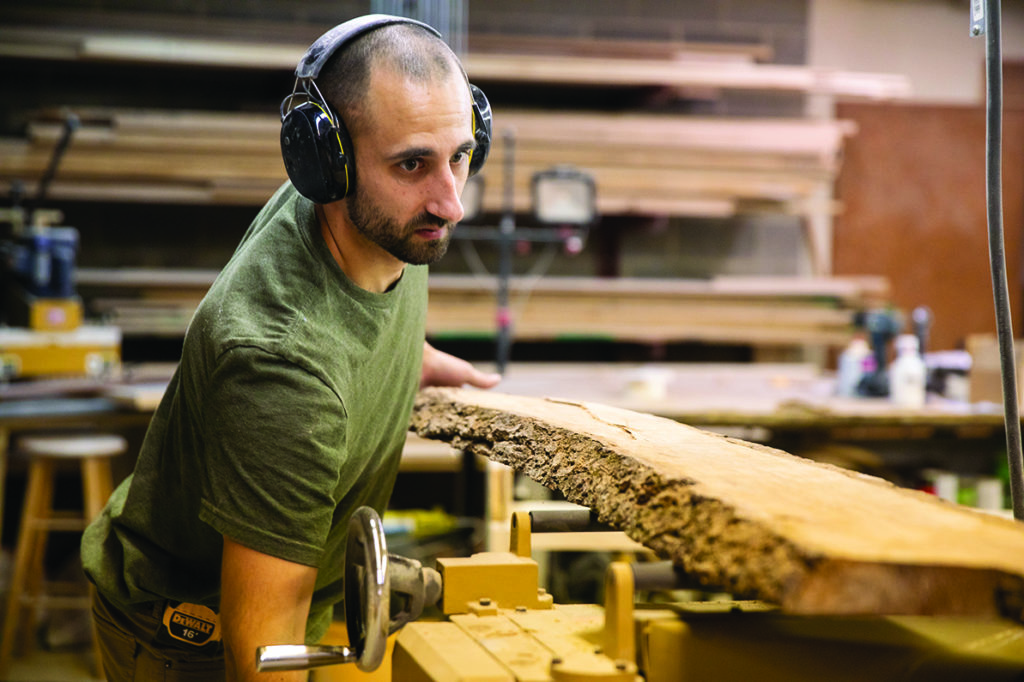
Dan Purkapile in his workshop. 
Dan Purkapile in his workshop. 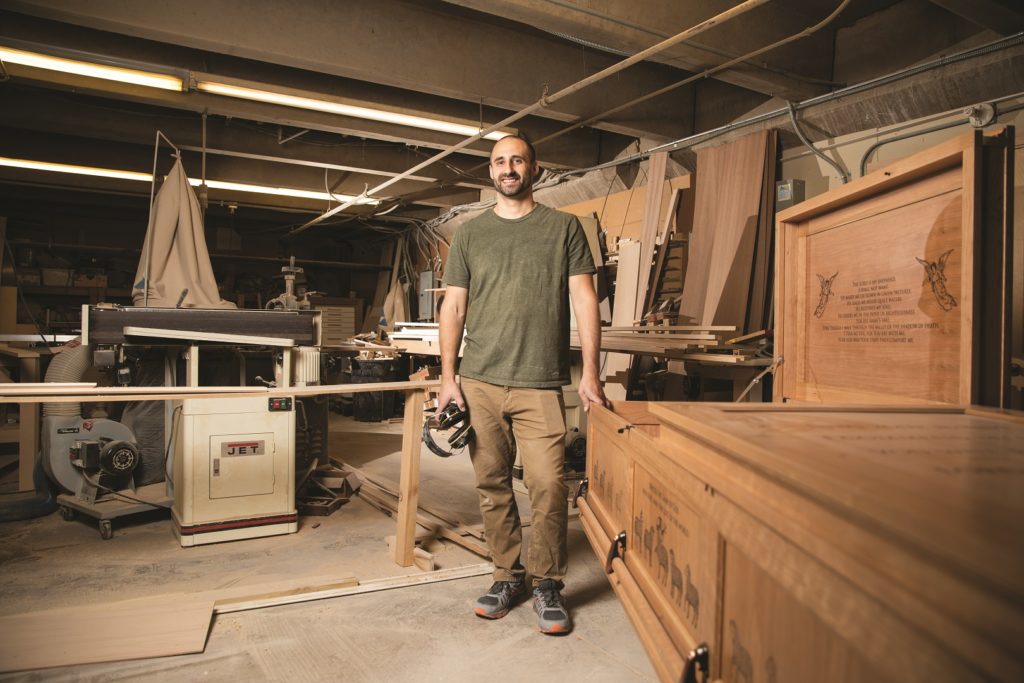
Dan Purkapile, owner of Capstone Woodworking and a University of St. Thomas alumni, stands for a portrait in his carpentry wood shop in New Brighton, Minnesota on March 11, 2021. Purkpile was photographed for an upcoming feature story in Lumen Magazine. 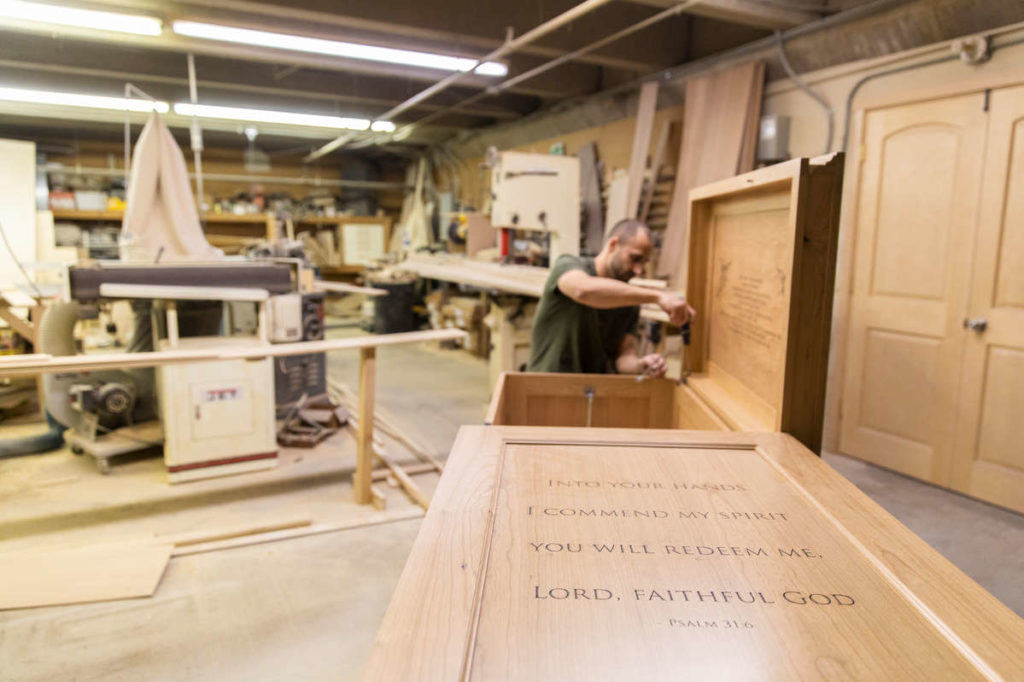
Dan Purkpile in his carpentry wood shop. 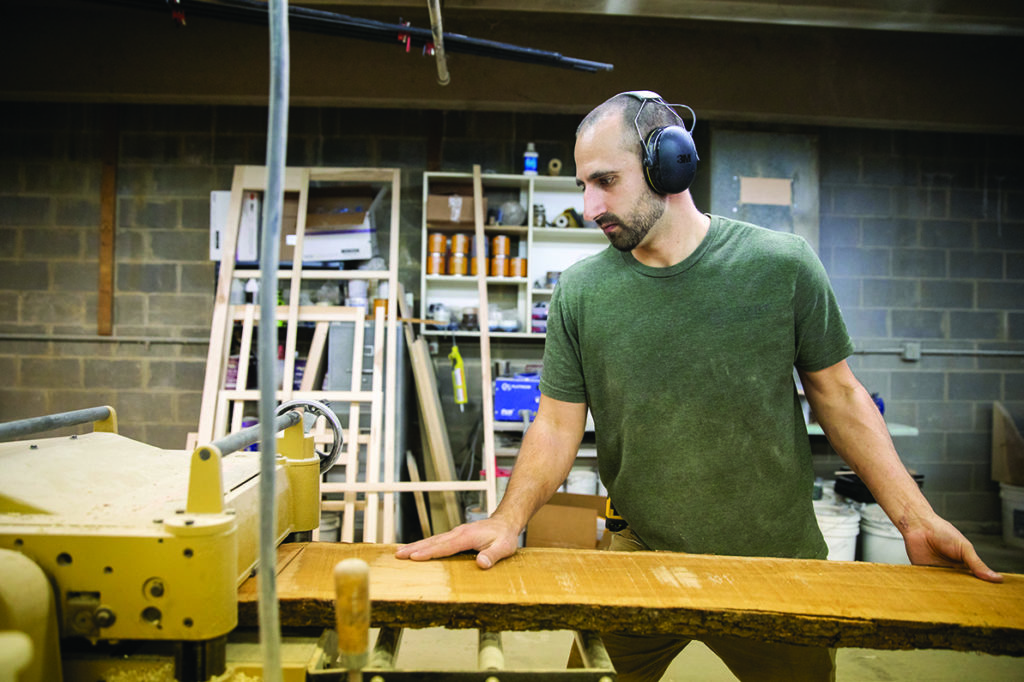
Dan Purkapile in his workhop.
Purkapile also grew in appreciation for what he calls the mystery of beauty and its imperative role in the life of the soul.
“What draws us to a certain church or piece of artwork,” he wonders, “What makes something beautiful? Our culture really struggles to define this, but even nonbelievers are going to visit the Cathedral of St. Paul. Why does that draw people in? There’s a mystery to it. Something transcendent.”
Purkapile enjoys a taste of this transcendence every time he finishes a project. “It brings me a lot of satisfaction after installing a job and getting to see the whole project come together and transform a space,” said Purkapile. “I don’t know how many times customers have come to see the project in its final stages and comment on how much it changes the space for the better. That, for me, is what I enjoy the most about what I do and is really what brings dignity into the workplace.”
After discerning out of seminary, Purkapile started working for various cabinetmakers. He soon launched his own shop, Capstone Woodworking.
He and his wife Robyn, a pacemaker nurse, have a daughter, Eliza (1), and a son, Robert (3). Purkapile said that becoming a parent has only heightened his appreciation for working in a business that is built on creation.
“Having the opportunity to bring life into the world and holding your own baby,” he said, “it’s a really profound experience of participating in creation, and to see the goodness and the dignity of life, to be able to participate in that. Even at the ultrasound, going to hear the heartbeat before meeting our son ... how can someone deny the beauty of life, even at this stage? [Being a father] has given me such an appreciation for so much of what the Church is fighting for.”
“My first and most important obligation is to my family, loving my wife and forming my children to be good Catholics. At the end of the day, the work that I am most proud of and brings me the greatest joy is building a family with my wife, Robyn, and enjoying the children that we have and the joy they bring to our lives.”
A most sacred space
In the spring of 2020, Purkapile’s mother fell gravely ill – she was terminal. And as sober a task as it was, Purkapile decided to make his mother’s casket.
“It was a nice gift to be able to give the family,” he recalls, “but it was also a really hard process to go through, to know what it would ultimately be used for. It was meaningful.” His mother was never healthy enough to see the finished work, but she knew her son was making it for her, and that it would be beautiful. It was time-intensive, detailed and personal. Since then, he has designed and created other caskets.
“Designing sacred spaces,” said Purkapile, “there’s so much theology that goes into that,” and it was a notion he took up when selecting the images that would adorn his mother’s casket, which has become a prototype for other caskets he’s working on. The lambs that appear on the side are reminiscent of those in the mosaic apse of Rome’s San Clemente, one of his favorite churches from his Art History course at the Angelicum.
“I even put the twelfth lamb on there,” he said, running his hands along a casket that currently sits in his shop, “He’s looking away to signify Judas.”
“I was really blown away by the use of art in early Christianity to communicate the basic truths of the faith,” he remembers, “and how simple beauty can move the hearts of people to God. Rome is a good example of how our perception of beauty has changed over time, but certain aspects of art seem to be timeless and effective through the ages.”
This story is featured in the spring 2021 issue of Lumen.
